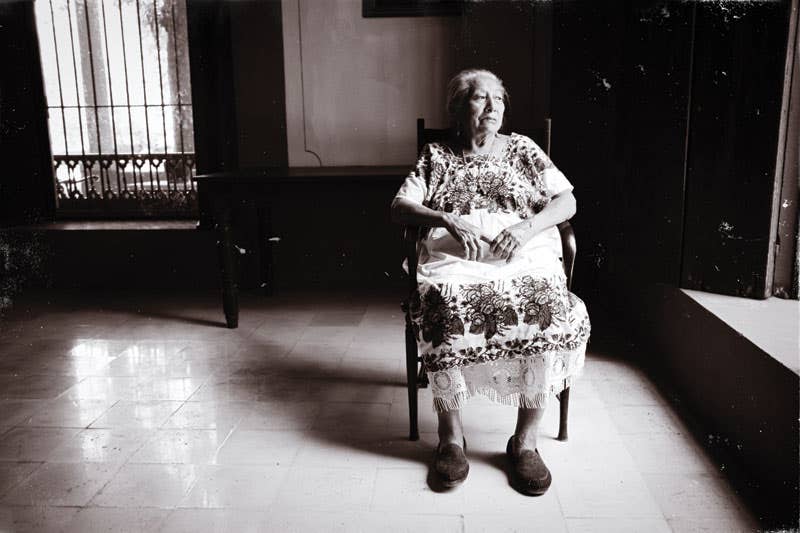
Just outside Merida, the capital of the Yucatan, I drive toward the home of my friend, Margarita "Wiggie" Andrews. I exit the car and enter her sun-flooded kitchen, which is filled with the bustle of dinner being prepared. This time, I have come not to see Wiggie, but Transita Varguez Pacheco, her live-in cook for more than 50 years.
I find Transita, a petite 78-year-old, working alongside her sister, Ernestina, and granddaughter Azul, directing them in her native Mayan, punctuated with Spanish words. In the Yucatan, both languages are often spoken, interchangeably. The Maya, an ancient Mesoamerican people, have occupied the peninsula for millennia. Their heritage is everywhere, but perhaps nowhere more than in the food. This is why I'm here. I've always been fascinated by the region's cooking, and Transita has invited me to watch her make tonight's meal.
The vast limestone peninsula that is the Yucatan seems worlds away from Mexico City, where I grew up. It's the country's easternmost point, physically and spiritually closer to Havana than to Mexico's capital. Though the native foods are the same as those in the rest of Mexico—squash, corn, tomatoes, chiles—it's in the Yucatan where the Maya mastered the cultivation and cooking of them. I admire the region's excellent tamales and pumpkin-seed salsas; I crave the bold recados—pastes made with chiles, herbs, and spices—that are rubbed on or stirred into all kinds of dishes.
Though its roots are Mayan, Yucatecan cuisine is influenced by all over. Its remote location meant that Europe, not Mexico, was the main trade partner, and Old World ingredients were adapted to New World dishes. When the Spanish conquered the Yucatan in the 16th century, for instance, sour orange was introduced. It came to define emblematic foods such as cochinita pibil, pulled pork that is tenderized in sour orange juice and garnished with onions pickled in the same. It's also essential to pollo en escabeche oriental, or "pickled chicken," the dish Transita is most celebrated for, which she is making here today.
Transita manages her crew like a restaurant chef. "A tortear!" (Make the tortillas!), she tells Ernestina, without taking her eyes off the chicken she is rubbing with a recado made from oregano, black pepper, cumin, cinnamon, garlic, chiles, and plenty of sour orange juice. Transita then moves into the yard, where she chars some chiles over smoldering coals, briefly grills the chicken, and transfers them to a large pot. As the pot cooks over the coals, the sweet-spicy aroma is intoxicating.
As the dinner guests arrive, they stop by the kitchen to greet Transita with hugs and kisses. Though it's hard to believe, Transita confides, "I didn't really know how to cook when I started." She was hired at 16, without previous experience. With no idea how to feed a household, she went to the market and watched other women shop, bought the same things they did, and asked how to cook them. When she returned home, the first dish she prepared was puchero, an elaborate stew of chicken, beef, pork, and vegetables. "They loved it!" she says, clapping at the memory.
When the meal commences in the dining room, I stay in the kitchen with Transita, Ernestina, and Azul. They serve the first few courses, and the plates come back clean. But when they send out the pollo en escabeche, we hear whoops and cheers coming from the dining room. In this moment, Transita slides me a plate. The chicken is smoky and spicy, fruity yet tart. It's extraordinary. As dinner wraps up, each guest comes to the kitchen to thank Transita and her crew. Someone calls her Queen of the Yucatan, and this is how I will remember her. —Mauricio Velazquez de Leon's last article for Saveur was South of the Border (April 2011)
Keep Reading
Continue to Next Story










